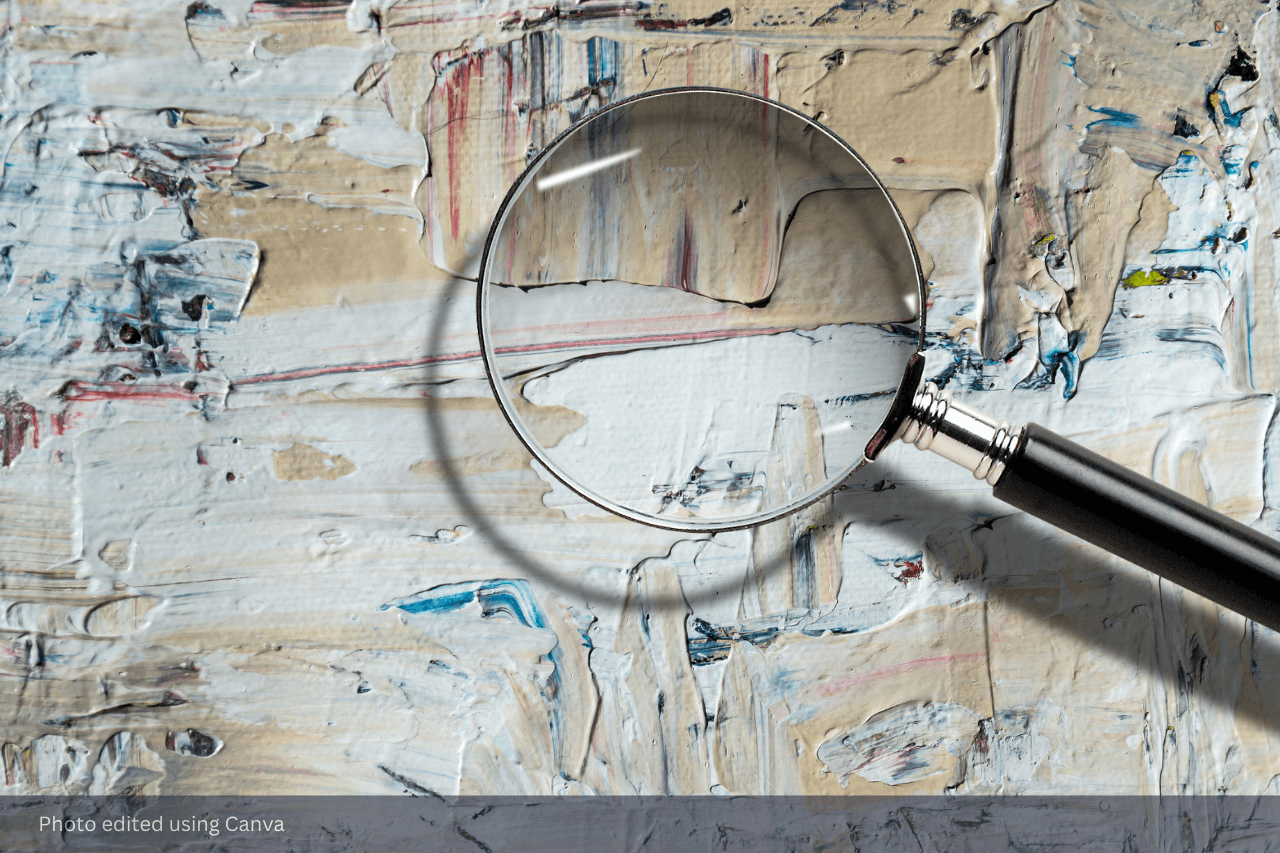What sets the art connoisseur apart in the world of art? While curators manage art exhibitions and art dealers handle the buying and selling of pieces, the connoisseur emerges as the true art expert in evaluating works. From examining style and technique to uncovering an artist's intent, art connoisseurs bring unparalleled depth to the appreciation of art.
According to The National Gallery, the role of the connoisseur dates back to the late 19th century when the flourishing art market cultivated individuals with refined taste, formal knowledge, and hands-on experience.
The Stanford Encyclopedia of Philosophy notes that these art specialists helped collectors discern great art from mere craft, marking a critical role in the art sector.
Denis Diderot, a renowned French writer, philosopher, and art critic, was among the best art critics of his era. His pivotal role as an editor of the Encyclopédie in the Parisian Salons—a prominent social gathering of 18th-century France—greatly advanced the practice of connoisseurship.
According to Britannica, Diderot’s writings reflect a systematic approach to critical appreciation within art criticism, advocating for a deeper understanding of artistic quality and social context.
Although the role of art connoisseurs may initially seem convoluted, this article demystifies who these art experts are, what their responsibilities are in the art market, plus some essential tips for little art connoisseurs.
Who is an Art Connoisseur?
An art connoisseur is a passionate enthusiast and informed collector with a keen eye for identifying distinct styles. They possess a sharp visual memory and a deep understanding of artistic elements such as lighting and medium, as referenced in the Naturalist Gallery.
Moreover, these art specialists explore the influences shaping artists’ work, with their expertise enhancing their ability to admire and express the beauty of art.
Considering these, a frequently asked question is: What makes an art connoisseur different from an art buff?
While an art buff might easily recognise the iconic works of Picasso and van Gogh, a connoisseur leverages their extensive knowledge of art.
Award-winning artist, Carolyn Schlam claims that they delve deeper into the artwork by analysing its impact on contemporaries and successors, placing pieces within the broader context of art history.
The Influence of Art Connoisseurs in the Art Market
Connoisseurship emphasises the focused study of an artist’s work to develop a deep familiarity with their style and technique, making these artists' creations recognisable.
Art Validation
Art expert Clare Diamond explains that the trained eye of art connoisseurs is marked by a heightened sensitivity to details like composition, brushwork, and subject matter, often likened to instinct or intuition.
Until the 19th century, it was the most trusted method of art appraisal, with practitioners—often artists or gentleman collectors—esteemed as scientists for their disciplined approach to study, analysis, and classification.
Provenance Authentication
Moreover, the spread of counterfeit artworks and pieces with incorrect attributions in the secondary art market is a growing issue that undermines trust, harms reputations, and skews shared cultural history, Diamond highlights.
In 2012 and 2013, reports emerged highlighting the increasing issue of forgery and fraud within China's rapidly growing art auction sector.
Journalists noted that manipulated sales and artificially inflated prices had so distorted the market that the true value of many Chinese artworks and antiques remained uncertain.
In this context, art connoisseurs play a vital role in provenance authentication, ensuring the legitimacy of artworks and protecting market integrity.
Defining Practices of Art Experts
When an artwork enters the art market, it is often first analysed, categorised, and indexed by connoisseurs. This process involves evaluating its attributes, authenticity, and historical context, laying the foundation for its market positioning and scholarly recognition.
The section below references the research of art underwriter Joris Corin Heyder, who explored the critical practices that addressed key questions surrounding art evaluation.
Judging Art
Connoisseurship practices involve making judgements about art based on authenticity, quality, and historical context. While everyday practices such as measuring, indexing, and comparing play a vital role in judgement, pinpointing the exact point at which art criticism is formed can be challenging.
For instance, Immanuel Kant's Critique of Judgment explores how people form judgements about beauty and art. He argues that the judgement of ‘taste’ is unique as it balances feelings and reason.
According to Kant, when individuals judge something as beautiful, it is not based purely on logic or personal preference but on a shared sense of aesthetic experience. In other words, judgements of beauty are made with the expectation that others will agree.
While the point at which judgement is finalised remains unclear, it is observed that judgement typically involves moving between details and the overall artwork that switches between different modalities –mind, emotions, and perception.
Comparing
Following up on the shift in judgement, this is made achievable by comparing artefacts, ideas, aesthetic experiences, contexts, discourses, influences, attributes, and more.
Utilising displays and tools such as libraries and digital repositories offers valuable perspectives on how specific norms and trends were formed, Heyder shared.
Take the album Recueil de Compositions par Lagrenée Le Jeune—a curated eighteenth-century collection of images, prints, and drawings. This resource proved invaluable, providing a foundation for art judgements through continuous comparative evaluations of its contents.
Seeing Through
From its early stages, connoisseurship greatly benefited from an interdisciplinary approach. Early connoisseurs came from diverse backgrounds, including natural sciences, art, philosophy, and medicine, raising questions about how their methods shaped their understanding of art.
Valerie Kobi's work highlights the impact of optical devices like magnifying glasses and microscopes on connoisseurship in the seventeenth and eighteenth centuries.
These tools allowed connoisseurs to examine artworks' fine details closely, leading to the development of new vocabulary and a material-focused, technical approach to art evaluation.
This shift emphasised qualities like accuracy, objectivity, and attentiveness, which became key criteria for ensuring the credibility of connoisseur judgments.
Top Advice for Little Art Connoisseurs
The process behind connoisseurship goes beyond a simple appreciation for art; it requires sharp discernment and keen intelligence to identify subtle nuances, said the Naturalist Gallery.
Here are some essential tips before one embarks on the path of connoisseurship. The tips below highlight the knowledge and techniques to develop expertise in the art world.
1. Develop Understanding of the Critiquing Process
Some individuals, like the famous art critic Jerry Saltz, may have a natural aptitude for connoisseurship, even without a formal degree. However, Frédéric Elsig argues that connoisseurship is a skill that can be cultivated and learned.
The Professor of Medieval and Renaissance Art History supports this by deconstructing the process of evaluating an unidentified or mislabeled artwork.
One key step involves art historians asking focused questions in a particular sequence to reconstruct its missing historical context.
For example, they may start with questions such as: “What materials and techniques were typically used in this style or era?” “Who were the potential artists or craftsmen active during this period?” In this way, art specialists can build foundational understanding to uncover its historical context.
Additionally, analysing the materials helps situate the piece within a timeline by comparing it to other works and determining its chronological placement.
Through this methodical analysis and comparison, connoisseurs can attribute the work to a maker, whether a known figure or a provisional identity.
This process underscores that connoisseurship is a learned skill developed through practice and experience rather than innate talent alone.
2. Stay Informed Regularly
According to The Art Newspaper, connoisseurship is constantly evolving, driven by the discovery of new artworks and attributions that reshape the geographical, national, chronological, and stylistic foundations of art history.
In this sense, art connoisseurs refine their expertise in art and expand their knowledge to stay aligned with these ongoing developments.
Whether browsing online, exploring museums and art galleries, spending hours observing installations, or delving into library archives at iconic places like the Louvre in Paris or the Tate in London, the key is to stay consistently updated.
3. Take Notes and Revisit Them
Art connoisseurs should develop the habit of recording observations, artist names, techniques, and personal impressions to build a personalised knowledge bank. These notes can be stored in spreadsheets or a digital database, such as an asset management platform—valuable tools for strengthening memory and expanding mental collections.
Once note-taking becomes second nature, revisiting records will feel effortless, with information readily accessible whenever needed. Moreover, notes enhance the ability to recall and apply current knowledge instinctively, eliminating the need to consciously search for it.
Nevertheless, this practice fosters a more intuitive and fluid understanding of art, enabling art experts to respond quickly and effectively when needed.
What Every Art Connoisseur Can Learn from Modern Art Critics
Everything discussed in this article reflects the perspective of modern art critics on the journey of connoisseurship.
From defining who an art connoisseur is to exploring their significant influence on the art market, it is evident how these experts shape the industry.
Their practices are deeply rooted in judging, comparing and seeing through, making famous art experts a cornerstone of the art world’s credibility. Through their discerning eye and analytical approach, they establish standards of quality and authenticity that guide collectors, institutions, and the broader public.
However, it is essential to understand that connoisseurship, while invaluable, does not always provide absolute facts. Often, it leads to approximations, as art is subject to evolving interpretations and discoveries, said Heyder (2021).
Ultimately, connoisseurship is a dynamic, ongoing process shaped by certainty and ambiguity.
Art Criticism: Frequently Asked Questions
1. What Does an Art Connoisseur Do?
The National Gallery states that a connoisseur is a collector or art enthusiast who is skilled at identifying distinctive individual or regional styles in works of art.
2. What Makes Someone a Connoisseur?
According to the Cambridge Dictionary, a connoisseur is someone with specialised expertise in a particular field, such as art, cuisine, or beverages, with the skill to evaluate and appreciate its quality.
3. What Does it Mean to be a Good Art Connoisseur?
Merriam-Webster describes a good connoisseur as an individual proficient in an art form's techniques, principles, and intricacies and capable of serving as an informed and discerning critic.
MyAssets: A Digital Gallery that Stores Your Art and Knowledge
Taking notes play a crucial role in cultivating an art connoisseur’s understanding by capturing detailed observations, techniques, and personal insights. This practice not only enhances memory recall but also builds a foundation for informed critique and deeper art appreciation.
While pen-and-paper may be effective in the beginning, a digital collections management platform such as MyAssets can take note-taking to the next level.
MyAssets is a complete asset management platform that provides a streamlined, digital space to organise, store and access your art-related insights, documents, and any notes about art quality, techniques, history, or provenance. Using a centralised database for your art notes ensures your collection of knowledge grows consistently.
With MyAssets, art connoisseurs can efficiently track their observations, revisit their notes anytime, and build a comprehensive, personalised art archive that supports their expertise and decision-making.
Interested to know more? Start by exploring the art collections organiser now.
Ready to sign up for a free trial? Visit app.myassets.com.







